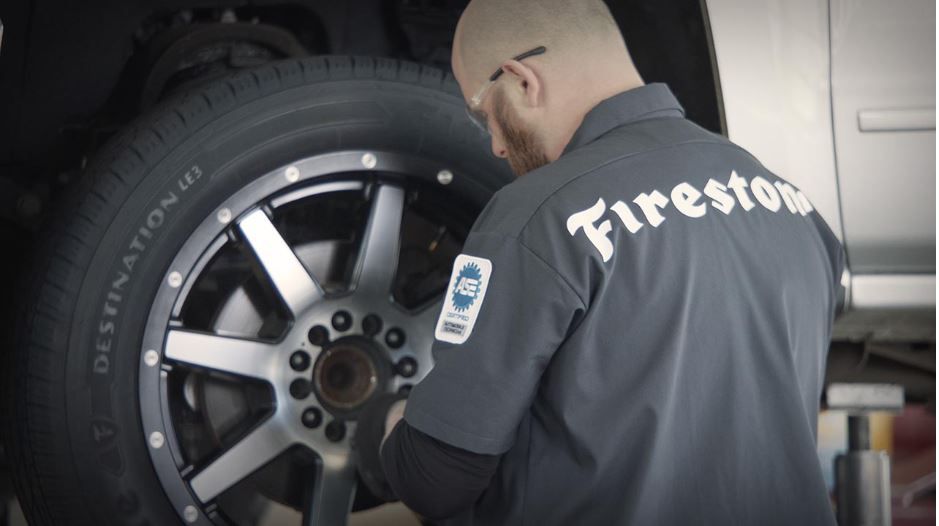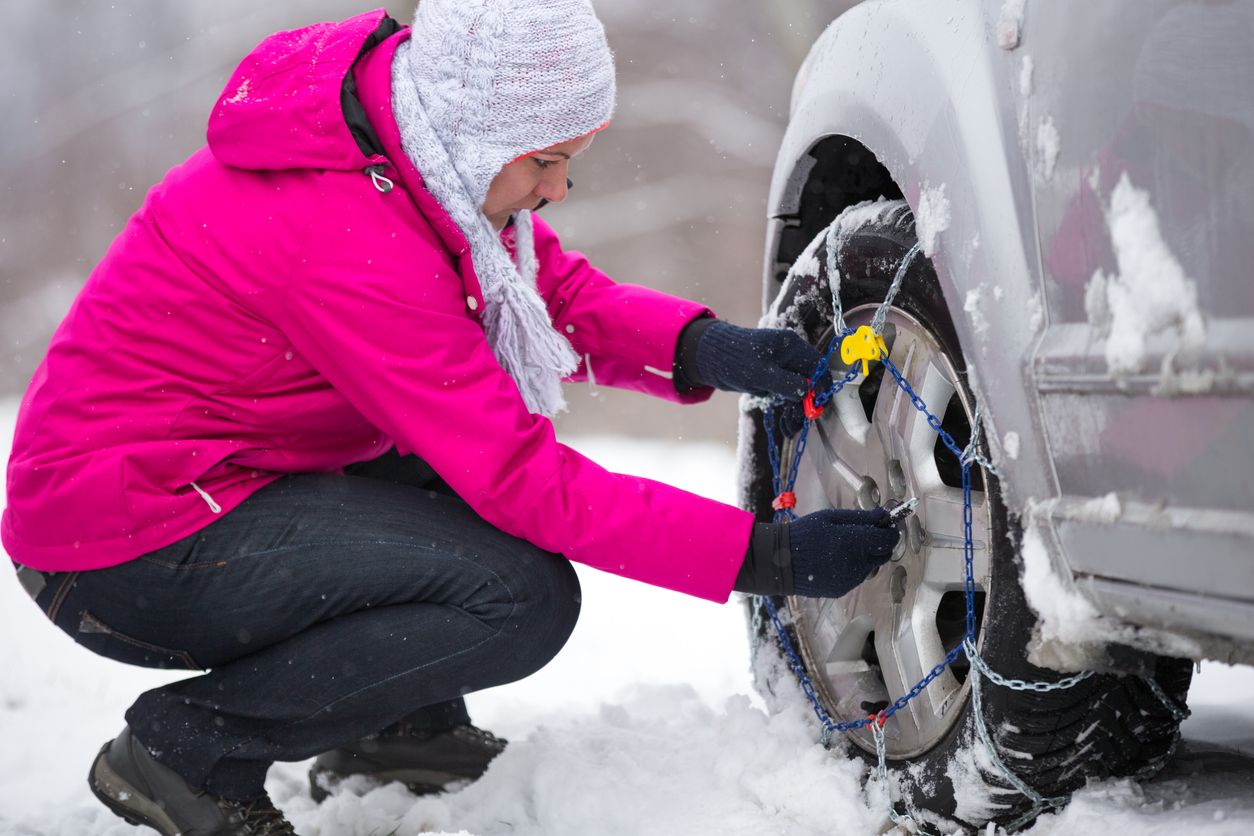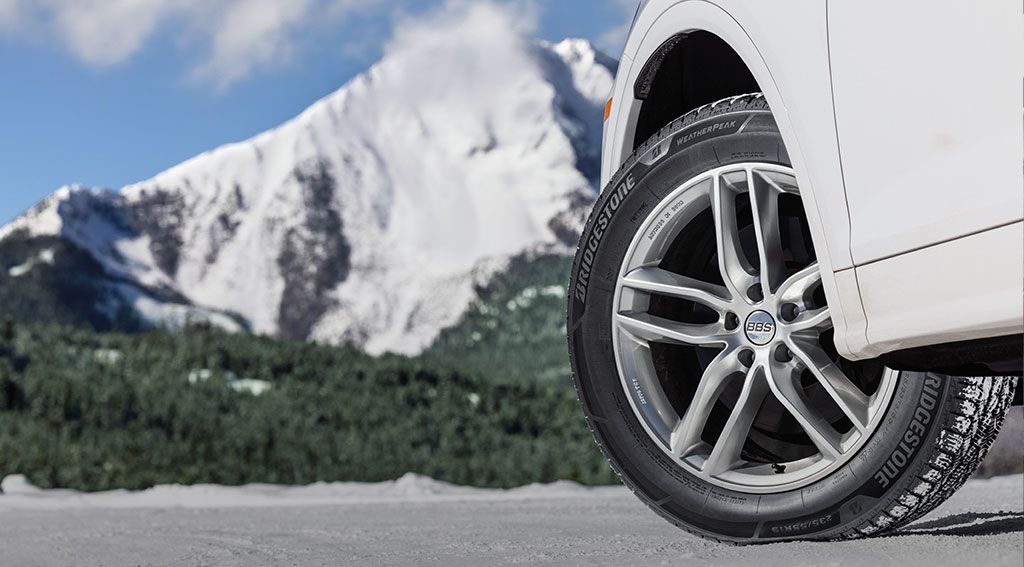Your tires are one of the most essential components of your vehicle. Keeping your tires in good working condition is critical to performance and safely getting from point A to point B daily. So, are you wondering how to tell if you need new tires? Check out these tell-tale signs that your tires are worn and need to be replaced!
1. Check tread wear and tire wear indicators.
Tire tread is the rubber on your tires that makes contact with the road. In most everyday tires, that rubber has ribbed patterns that help push water and snow out of the way to improve your grip. Specialty tires, like snow, all-weather, or mud tires, have unique tread patterns to help with performance on different surfaces.
How to check your tread
With this easy test, a penny can buy you peace of mind regarding your tires and safety. Place a penny head first into several tread grooves across the tire. Your treads are shallow and worn if you always see the top of Lincoln’s head. If this is the case, your tires need to be replaced. If the tread always covers part of Lincoln’s head, you have more than 2/32 of an inch of tread depth remaining. This means your tire may not be too worn.
Another way to check your tread depth is to look for the tire wear indicators. These bars or lines on the tire run perpendicular to the deeper tread channels. If the tread is above the wear bars, you have enough tread remaining. However, if the bars are level with the tread, your tires may be worn out.
Why does tread wear matter?
The most important reason to worry about tread wear is safety. When your tire treads are worn, your car may respond poorly in adverse weather conditions like rain and snow. With good treads, your car will grip the road better. It’s also worth noting that having insufficient tread is considered illegal in many states, and you could face tickets or fines if you cause an accident due to poor tire tread.
2. Look For Signs of Weather Damage
Exposure to heat and the sun’s ultraviolet rays may cause structural changes to your tires. While these changes are not always as severe in places with more temperate weather, it can still happen! Some signs of weather damage include:
- Deep cracks in the rubber, typically caused by either UV damage or from abrasive road salt
- Hardening of the rubber from excessive cold
- Fading and discoloration from extreme sun exposure, which can indicate deeper issues
- Dry rotting/crumbling from sitting in the elements for extended periods
3. Consider How Long You’ve Had Your Tires
How often do you need to change your tires? Regardless of tread wear, vehicle manufacturers generally recommend you replace your tires every six years. Most tire manufacturers recommend you replace your tires at 10 years. Refer to the manufacturer’s recommendations on your specific tires.
The question of how often to get new tires can depend on the frequency and distance you drive, road conditions, and more. However, it’s important to remember that tires can degrade even if your vehicle sits in your driveway.
4. Look For Visual Symptoms of Bad Tires
Tire tread isn’t the only visual indicator that your car needs a new set of kicks. Look for these other signs while you inspect your vehicle.
Bulges and bubbles
If your tires have bulges or bubbles visible on the sidewalls, they need to be inspected by a professional ASAP. Bubbles are caused by damage to the interior lining of your tire, most often from impact, such as hitting a curb or a nasty pothole. Bulges on the sidewall or tread might indicate that the structural integrity of your tire may be compromised. Tire bubbles tire can also burst while driving, causing a total blowout that can be dangerous for you and other drivers on the road.
Cracks and cuts
Deep cracks, cuts, and slices in your tires can indicate more significant structural issues. This damage can be caused by hitting curbs, extreme temperatures, and running over sharp objects. Damage to your tires can weaken them, cause leaks, and even blowouts.
Uneven tread wear
Your tires should wear evenly across the tread or the tire area that comes in contact with the road. If the inside is more worn than the outside, or vice versa, it can indicate issues with your alignment or suspension. Uneven wear can also wear your tires more quickly as they are made to have the pressure of your vehicle distributed evenly across the entire tread.
5. Pay Attention to Performance-Based Signs You Need New Tires
Sometimes, bad tire signs come more from the tire’s performance while you’re driving than from its appearance. If you’re wondering, “Do my tires need to be replaced?” These are indicators that the answer might be yes!
Frequent air pressure loss
It’s normal for your tires to lose air pressure over time, especially if you live somewhere with drastic temperature changes. If it seems like you have to top off your air on a weekly or even daily basis, though, there may be a problem. Air leaks of this magnitude are a common sign of damaged tires.
Poor traction while driving
There are some situations where poor traction is to be expected, like in severe mud or snow. But if your tires are slipping and sliding on everyday roads – they may need to be replaced. Poor traction is a sign that your tread is worn out and possibly to a dangerous extent. If your tires aren’t gripping on a standard road or are gripping worse than they used to, it’s important to have them checked out.
Excessive vibration or noisiness
Sometimes, a vibrating steering wheel or thunking noise indicates an alignment problem. Other times, however, it can be a sign that your tires are worn or damaged and need repair. If your vehicle seems to be vibrating or the tires whine, clunk, or thump, it’s time to get them inspected and possibly replaced.
Firestone Complete Auto Care Has Your New Tires!
When it’s time to change your tires, we want to make purchasing a new set as simple as possible. We have the best selection of quality tires to fit your vehicle, your budget, and your driving style. From economy to ultra-high-performance tires—in the size you need from brands you trust, including our well-known Bridgestone and Firestone brands—you can find everything you need at your local Firestone Complete Auto Care. Visit us online to schedule your appointment today.


